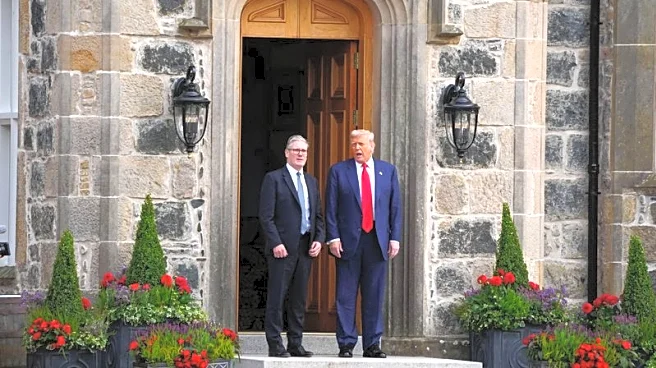What's Happening?
Vodafone and Three have merged to form the largest mobile operator in the UK, named VodafoneThree. The merger, which involved a 51% stake from Vodafone and 49% from Three's owner CK Hutchison, took two years to receive anti-trust approval. Despite the merger, both brands are maintaining separate communications strategies, with Three promoting the benefits of Vodafone's network and Vodafone highlighting similar advantages through its branding assets. This approach deviates from the typical merger strategy where one brand is chosen to represent the merged entity.
Why It's Important?
The merger of Vodafone and Three is significant as it creates a major player in the UK mobile market, potentially influencing competition and consumer choices. Maintaining dual branding allows both companies to leverage their existing customer bases, which collectively serve around 28 million users. This strategy could mitigate risks associated with brand consolidation, such as customer confusion and internal corporate tensions. The decision to keep both brand names initially may also ease the transition for employees and customers, providing stability during the merger process.
What's Next?
The future of the VodafoneThree brand may involve a phased approach to eventually consolidate under a single name, likely Vodafone. This strategy, known as 'phasing,' allows for a gradual transition that minimizes disruption. Market research will play a crucial role in determining the timing and feasibility of this transition, ensuring customer loyalty and brand strength are maintained. As the mobile industry continues to evolve with advancements like 5G, the merged entity will need to adapt its branding and service offerings to remain competitive.
Beyond the Headlines
The merger highlights broader trends in brand management and corporate strategy, particularly the challenges of maintaining dual brands post-merger. It underscores the importance of strategic planning in brand architecture, where companies must balance the benefits of consolidation with the risks of alienating existing customers. The decision to initially retain both brand names reflects a nuanced understanding of consumer behavior and market dynamics, offering insights into effective brand management in the telecommunications sector.












